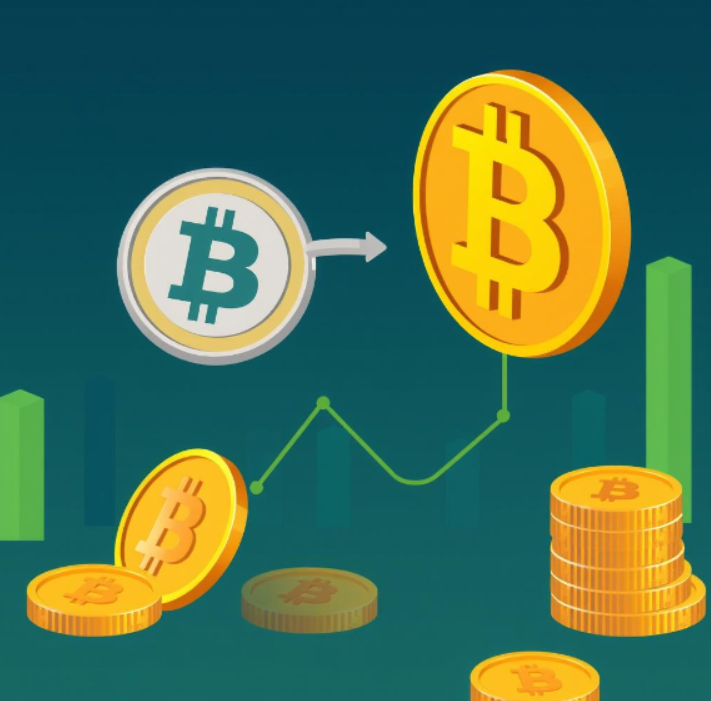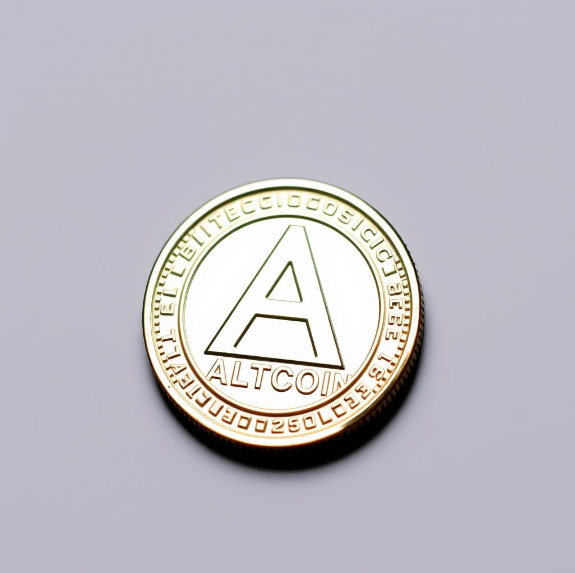
- Best Crypto ExchangesAlgorithmic Trading PlatformsNo KYC ExchangesArbitrage BotsAuto DCAAutomated TradingBinary OptionsCentralized ExchangesContract TradingCopy TradingCrypto Index TradingCrypto-to-Fiat ExchangesCrypto BrokersDay TradingDecentralized ExchangesDemo Trading AccountsDerivative ExchangesDual Investment TradingBeginner ExchangesFutures TradingGrid TradingHybrid ExchangesLending PlatformsLeverage TradingLiquidity PoolsLive TradingLowest Fees ExchangesMargin TradingMarket Making ExchangesOptions TradingP2P Crypto ExchangesPayPal Supported ExchangesPerpetual Futures TradingRecurring BuysSafest ExchangesSavings AccountsShorting ExchangesStaking Rewards ExchangesSwap ExchangesSwap PlatformsTokenized Stocks TradingZero Fee TradingCrypto OTCInsitutional TradingBitcoin OTCBitcoin OTC GuidesBitcoin Trading BotsCrypto AppsCrypto Trading AppsCrypto Trading PlatformsAustralian Crypto Trading PlatformsExchanges for BitcoinPlaces to buy CryptoUSA Bitcoin ExchangesBitcoin Trading StrategiesTradingDEX Best PracticesDeFi Best PracticesDEX OverviewDEX Tutorials
- Best Crypto WalletsSelf-Custodial WalletsCustodial WalletsHardware WalletsMulti-Sig WalletsMobile WalletsDesktop WalletsBrowser Extension WalletsLightning WalletsDeFi Bitcoin WalletsPaper WalletsBitcoin WalletsSecure Bitcoin WalletsEthereum WalletsSolana WalletsPolkadot WalletsBNB WalletsLitecoin WalletsRipple WalletsCardano WalletsAvalanche WalletsTezos WalletsNFT WalletsDeFi WalletsStaking WalletsTrading WalletsGaming WalletsPrivacy WalletsHODL WalletsRemittance WalletsEnterprise WalletsMultichain WalletsWallet ServicesWallet Backup OptionsSecure WalletsWallet Security TipsWallet Setup GuideWallet Downloads
- Best Crypto & Bitcoin CasinosBitcoin CasinoAltcoin CasinosCard CasinosCrypto CasinosETH CasinosGuides: CasinosGuides: Blackjack StrategyGuides: How to Play BlackjackGuides: How to Play PokerGuides: How to Play RouletteGuides: Poker StrategyGuides: Roulette StrategyTop CasinosBingoCasino BotsNo KYCArbitrum CasinosAvalanche CasinosBaccaratBase CasinosBNB CasinosBCH CasinosBitcoin CasinosBlackjackCasino BonusesCardano CasinosCluster PlaysCosmic Jackpot GamesCrapsCrashDAI CasinosDecentralized CasinosDeFi CasinosDiceDiscord CasinosDogecoin CasinosDrops and WinsEgyptian SlotsETH BonusesETH Live DealerETH No Deposit BonusesETH RouletteETH SlotsFree SpinsGalactic Slot MachinesGame ShowsHigh RollersHigh Volatility CasinosHorror Casino GamesInstant WithdrawalJackpotKenoLitecoin CasinosLive DealerMetaMask CasinosMetaverse CasinosMinesMinimum Deposit CasinosMultiplayer CasinosNewest CasinosNFT CasinosNo Deposit BonusesNorse Mythology SlotsTrump CasinosOptimisim CasinosPirate SlotsPolygon CasinosPrivacy-Focused CasinosProgressive JackpotProvably FairRespinsRouletteScatter PaysScratch CardsShiba Inu CasinosSic-BoSlotsSocial CasinosSolana CasinosStablecoin CasinosSweepstakes CasinosTON CasinosToshi CasinosTreasure Hunt SlotsTRX CasinosUSDC CasinosTether CasinosVerse CasinosVideo PokerViking Casino GamesVIPWheelRipple CasinosPachinkoLotteryMeme CasinosMobile CasinosOnline CasinosPlinkoPokerGuides: Poker FAQGuides: Poker LegalityGuides: Poker PromotionsGuides: Poker Room ReviewsGuides: Poker TournamentsTable GamesTelegram CasinosWeb3 CasinosMegaways SlotsBook of SlotsPlay Along with CryptoDaily ContestsWeekly RafflesBuy Extra Ball GamesHold and Win Slots
- Best Bitcoin SportsbooksFootballAmerican FootballNo KYCAustralian Open TennisBadmintonBaseballBasketballBetting ExchangesBonusesBoxingBundesligaChessCollege BasketballCricketICC ChampionsIndian Premier LeagueCyclingDartsEnglish Premier LeagueEsportsCall of DutyCSGODOTA-2FIFALOLStarcraftValorantWorld of WarcraftFIFA World CupIce Hockey BettingNHL Entry Draft 2025Ice Hockey World Championship 2025Formula 1French Open TennisGrand Slam TennisGreyhound RacingHandballHockeyHorse RacingKentucky DerbyLa LigaLive BettingMarch MadnessMMAMotorsportsNascarNBA DraftNFL DraftOlympicsPGAPoliticsPolitics (Trump)Politics (Kamala)US PoliticsRugbySerie ASnookerStock Car RacingSuper BowlTable TennisUFCUFC Fight NightUp vs DownUS Open TennisVolleyballWimbledonWinter SportsGolfSoccerTennis
Discover the Best Liquidity Providers of 2025
Explore the exciting opportunities presented by liquidity providers in decentralized finance (DeFi), where you can earn rewards by supplying liquidity to decentralized exchanges and other protocols. We proudly present an exhaustive overview of the top liquidity providers in this rapidly evolving sector.
Our comprehensive evaluations go beyond the basics, exploring key factors like platform security, liquidity pool performance, rewards, and risk management. Equip yourself with the insights needed to take full advantage of the best liquidity provider platforms available.
 Uniswap
Uniswap


Trade crypto assets directly from your wallet with no intermediaries. Uniswap offers permissionless, decentralized exchange powered by Ethereum.
Platforms Supported
Web Browser, Ethereum-Compatible Wallets
Use Cases
Decentralized Trading, Liquidity Provision, Yield Farming
Supported cryptocurrencies
ETH, USDT, USDC, DAI, and all ERC-20 tokens
Year launched
2018
The Top Liquidity Providers in 2025
Uniswap Overview
Uniswap is one of the most established decentralized exchanges (DEXs) within the Ethereum ecosystem, known for revolutionizing how users trade tokens by utilizing an automated market maker (AMM) model. Launched in 2018, it allows anyone to swap ERC-20 tokens directly from their Ethereum-compatible wallets in a fully decentralized and non-custodial manner.
Instead of using a traditional order book, Uniswap operates on smart contracts that automatically facilitate trades using liquidity pools. These pools are funded by users who contribute pairs of tokens and earn a portion of the trading fees in return. This model democratizes liquidity provision and lowers the barrier to entry for yield-generating opportunities in decentralized finance (DeFi).
As an open-source protocol, Uniswap plays a foundational role in the DeFi landscape, supporting integrations across hundreds of wallets, tools, and platforms. It provides robust governance through the UNI token, enabling holders to vote on protocol upgrades, treasury usage, and ecosystem direction. This governance mechanism ensures decentralization and long-term community alignment.
With support for multiple chains including Ethereum mainnet, Arbitrum, Optimism, and Polygon, Uniswap has evolved into a multi-chain liquidity hub. Its intuitive interface, gas efficiency on Layer 2 solutions, and widespread protocol integrations make it a go-to platform for both traders and liquidity providers seeking trustless, permissionless, and efficient crypto asset exchange.
Perks
Platforms Supported
Web Browser, Ethereum-Compatible Wallets
Use Cases
Decentralized Trading, Liquidity Provision, Yield Farming
Supported cryptocurrencies
ETH, USDT, USDC, DAI, and all ERC-20 tokens
Year launched
2018
Trade crypto assets directly from your wallet with no intermediaries. Uniswap offers permissionless, decentralized exchange powered by Ethereum.
Liquidity Providers Overview
-
Introduction: Begin your decentralized finance (DeFi) journey as a liquidity provider! Liquidity providers supply tokens to decentralized exchanges (DEXs) and earn rewards from transaction fees or liquidity incentives.
-
Definition: Liquidity providers contribute assets to liquidity pools on decentralized exchanges and DeFi platforms. In return, they receive a share of the transaction fees or rewards generated by users trading those assets within the pool.
-
Role in the DeFi Ecosystem: Liquidity providers are essential to the functioning of decentralized exchanges and other DeFi protocols. By supplying liquidity, they enable smooth trading, reduce slippage, and maintain the integrity of the market.
-
Types of Liquidity Provision: There are various types of liquidity provision, including single-sided and multi-token pools, stablecoin pools, and volatile asset pools. Each type has its own risk-reward profile and is suited for different investment strategies.
-
Real-World Applications: Liquidity provision is crucial in DeFi, enabling decentralized exchanges (DEXs), yield farming platforms, and automated market makers (AMMs) to operate efficiently. By contributing to liquidity pools, providers support decentralized trading while earning rewards.
-
Benefits of Being a Liquidity Provider:
- Earning Rewards: Liquidity providers earn a portion of the trading fees or liquidity incentives based on the amount of liquidity they supply.
- Yield Opportunities: Providing liquidity opens up yield farming opportunities, where users can compound their rewards by reinvesting earnings.
- Market Efficiency: By contributing liquidity, providers play a key role in ensuring efficient markets and reducing slippage in decentralized exchanges.
- Diversification: Liquidity providers can diversify their crypto portfolios by holding a variety of tokens within liquidity pools.
Liquidity Providers FAQ
-
How do liquidity providers operate in decentralized exchanges?
- Liquidity providers deposit pairs of assets into liquidity pools on decentralized exchanges, allowing traders to swap between the assets. Providers earn a share of the trading fees or liquidity rewards based on the amount they contribute.
-
What are the advantages of being a liquidity provider?
- Advantages include earning passive income from trading fees, participating in yield farming, and contributing to the efficiency of decentralized markets.
-
What risks should liquidity providers be aware of?
- Risks include impermanent loss (the difference in value between holding tokens in a pool versus holding them in a wallet), smart contract vulnerabilities, and liquidity pool fluctuations.
-
Why opt for providing liquidity in DeFi over traditional investment methods?
- Providing liquidity in DeFi offers higher potential rewards compared to traditional investments and allows participants to engage in decentralized financial systems without intermediaries.
-
How can liquidity providers manage risks and maximize returns?
- Liquidity providers can manage risks by choosing stablecoin pools to minimize volatility, diversifying across multiple pools, and closely monitoring the performance and security of the DeFi platforms they use.













